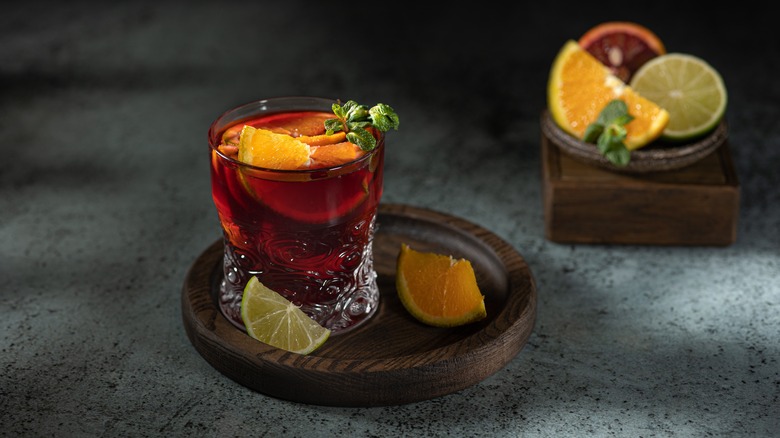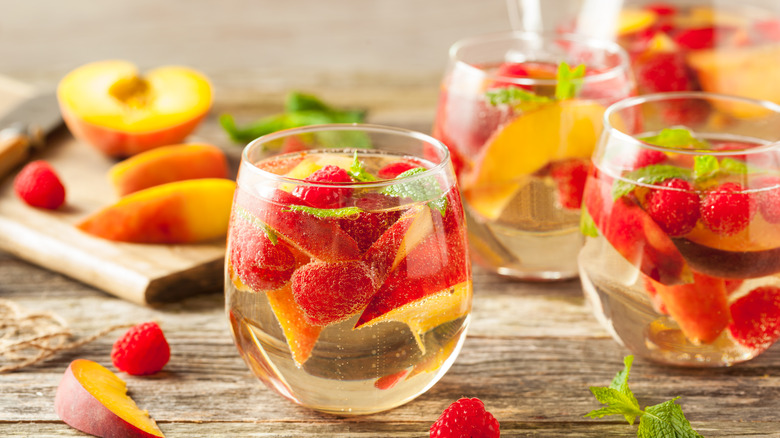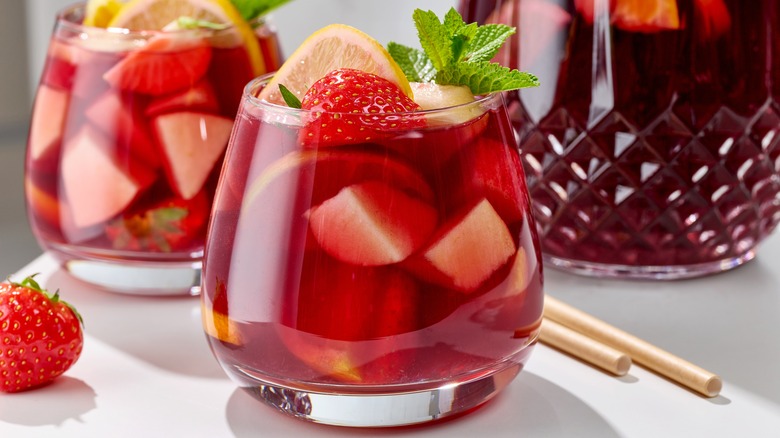You Should Be Adding More Ice To Your Sangria Than You Think
Making the perfect cocktail is somewhat of an art. You not only have to find the right balance of flavors and ingredients, but also ensure the proper balance of ice, a picture-perfect garnish, and the appropriate serving glass. Thankfully, when you want to make a signature drink for guests or dine al fresco on your back patio with ease, sangria is here to save the day.
Sangria is basically a blend between a glass of wine and a cocktail. It's essentially wine enhanced with various juices or fruit, and is often made in a pitcher and left to set for a while so the flavors can meld together. Sangria is easy to make, works perfectly in large batches, and all you need to serve it is a standard wine glass. However, you might be messing up one important step in the sangria process: the ice. It turns out you'll want to add plenty of ice to that wine glass in order to get the best flavor out of your sangria. In this case, a diluted drink is your friend.
Sangria needs a lot of ice
If you've ever ordered a cocktail and watched the bartender carefully craft it, you've likely noticed a moment where the cocktail is either shaken or stirred. In both cases, the process results in dilution, which not only balances the flavors of the drink, but also adds more liquid to the cocktail, giving you a drink with more volume. Sangria is no different; it benefits from being diluted with ice. Sangria can be incredibly sweet — especially white sangria or any version that's mixed with soda. As a result, it can be harsh to drink it straight, depending on your palate. By adding ice to the mix, you introduce dilution that will help give a subtle-sweet flavor that isn't overpowering.
You should not add ice directly to the sangria pitcher because it can melt quickly and become too watery. Rather, if guests are serving themselves from the pitcher, place a bucket of ice next to it; people can load up their glasses with ice, then pour the sangria over the top.
How do you make sangria?
The best part about sangria is that the options are almost endless. Wine serves as a versatile base that allows sangria to be made with many different combinations of fruits and juices. During the summer, you might want to offer a more citrusy sangria paired with a wine that has citrus undertones (the bottle should note whether there is any citrus in the wine). In the fall, apples and cinnamon paired with a red wine make for cozy flavors that come together nicely. And if you're going with a winter wine, use a dark red, then add cranberries and even a sprig of rosemary for a surprising twist.
To make any type of sangria, you'll want to stick to some important ratios. Wine Enthusiast recommends using up to 1-2 cups of mixed fruit, one bottle of red or white wine, ¼ – ½ cup triple sec, ¼ – ½ cup of brandy or light rum, and ¼ – ½ cup of juice, and stir. Finally, finish it with as little as ½ cup up to two cups of your favorite mixer; you can go fizzy with something like ginger ale or club soda, or even stick to something as basic as water. If you'd like, sweeten it with ⅛ to ¼ cup of a natural sweetener, like agave or sugar, depending on your preference, but make sure to let it sit overnight to let the flavors properly blend — top it off with your garnish of choice — and, of course, don't forget to serve it with plenty of ice.


